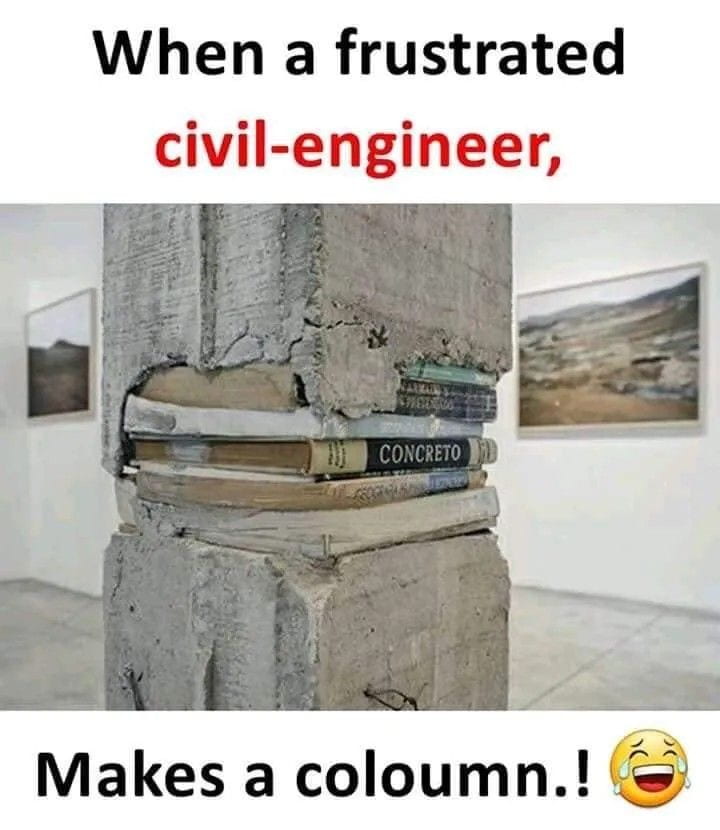Everyone’s heard of civil engineering: its a career that often becomes the butt of jokes like this one:

But what exactly is civil engineering? And surely it doesn’t involve any writing… right?
(wrong!)
So here it is, a (hopefully) accurate breakdown of the major sub-disciplines of civil engineering.
Geotechnical
When most people hear civil, they think “buildings” or “bridges,” but the ground we build on is also essential in keeping a structure standing. Geotechnical engineers investigate the soil to determine its bearing strength, soil type, movement, shrink-swell potential, and more. It’s an occupation that gets you out and about: drilling hand augers, inspecting earthworks, and talking to clients. It’s also a field that can contain a fair bit of report writing, so you better practice those columns!
New Zealand has a vast range of exciting geography that’s always on the move, and geotechnical engineers focus on the interaction between the earth and structures.
Structural
While it is a sub-discipline of civil, structural engineering is now offered at Auckland Uni as its own specialisation. The two share the same papers in Part II, after which structural students limit themselves focus on structural systems and material properties. As well as skyscrapers and bridges, your work could also involve tunnels, dams, or residential buildings. Engineers perform the calculations, evaluations and create drawings that make these structures possible.
The University of Auckland is known for its research into seismic design – an important feature in our earthquake-prone country.
Environmental
We all like the idea of clean drinking water and waste that disappears without a second thought. Environmental engineers are responsible for designing water systems, treatment plants, landfills, recycling centres, improving and monitoring air pollution, water pollution, and soil contamination.
Environmental engineers have possibly one of the biggest impacts on human health and the prevention of serious diseases.
Transportation
In a country with 83 000 km of roads, transportation engineers are certainly in demand! As well as designing and maintaining roads, transportation engineers can also be involved with rail, traffic optimisation, or different forms of public transport. They help to shape our streets and build infrastructure for the future.
Hydraulic Engineering
This is a sub-discipline that has some overlap with Environmental. The main focus of hydraulic engineers is the movement and behaviour of water. Pipes, pumps, hydro dams, rivers; these are the things hydraulic engineers dream about at night.
In summary, civil is a broad discipline with many challenging components. During third and fourth year you’ll be able to choose electives to gain more knowledge in some of the sub-specialisations. After graduating, however, many engineers are still able to switch between different fields.
I hope this helped give you all a little more insight into civil engineering!
I’m excited that comments have finally been enabled, so please feel free to leave some feedback/questions! 🙂
